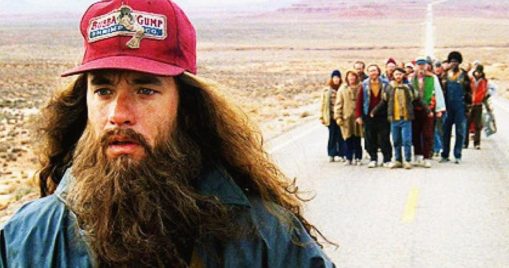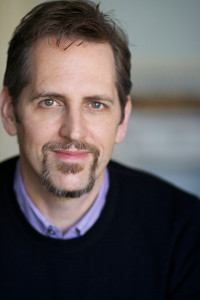When I first started writing, people who read my scripts sometimes said they lacked conflict.
This drove me insane.
I grappled for years to really understand what this meant.
I thought “conflict” meant things like fight scenes or arguments. Which I wasn’t that interested in.
Eventually I realized that “conflict” means “problems.” Specifically, someone with a problem who is trying to solve it, and finding that to be difficult. Where their attempts lead to unexpected complications.
That, to me, is the lifeblood of story and scripts, in any genre or medium. Conflict defined that way. Not just in the overall story but in every single scene.
And so much of what makes a script or portions of it fall short come down to scene writing that is not constructed to focus on conflict in this way.
How do you make sure your script doesn’t have that issue?
First, on the concept level, I think we want to make sure that a story is focused on a singular problem with an important measurable goal, with strong stakes that are external and not just internal, that the main character is actively trying to solve from scene to scene, that evolves and builds as they try to do that, where they are mostly losing in the middle.
I know that’s a lot to take in all at once. And that paragraph contains 7 hyperlinks to other posts that go deeper into each of those topics. And I could easily add three more here, about what I look for overall in a script, the 7 key elements of a central story problem, and the 10 Save the Cat genres that can be so helpful with this.
It’s not so easy to come up with a central story idea that checks all those boxes and feels believable, original and meaningful in some way, which is why I wrote a whole book about it, and now teach an online course to help writers achieve what I described in the book.
But this question of having enough conflict applies on the scene level, too. And that’s what I really want to explore here.
Here are three primary pitfalls I see in scripts from writers I work with, where the scenes are sometimes less than compelling in terms of conflict and the emotional investment from readers that we’re ultimately all going for:
1. Scenes with unclear point-of-view.
The best scenes have a “main character” in them who the audience understands and connects with. And the scene is part of a larger story for them where they’re trying to get what they want, and there’s difficulty and conflict involved. Some part of that pursuit is generally at the core of the scene. The audience is asked to look “through” that character and at everyone else, understanding what they’re trying to achieve and intrigued, like they’re watching their favorite sports team in the championship game.
Some good scenes might feature more than one character trying to pursue their overall story goal in the scene, where the audience understands and connects with each person’s intention and the conflicts they run into. This can happen in an “ensemble” movie or TV episode with more than one story in it. This is not easy to pull off. But possible. But for now, let’s just assume we’re talking about a scene with one main character, which is more typical.
A big part of what makes someone feel like the “main character” of a story or a scene, to the audience, is that they’re the one trying to achieve something, where it’s clear what they want, why they want it, and what they’re trying to do to get it. Or at least they’re feeling something strongly, and grappling with something, that is part of their overall story problem.
I often read scenes in scripts where multiple people are talking and even taking action but the audience doesn’t really understand or connect with any of them. This is usually because the scene doesn’t have a central conflict to it, meaning somebody wants something and is trying to get it (and finding that it’s not easy to do so, i.e. experiencing conflict).
Which leads me to my next point. Even when a scene does have that element, what we also want to avoid is:
2. Characters too easily getting what they want.
The best main characters (of stories and the individual scenes that comprise them) are underdogs in the sense that they don’t have the one thing they really want, yet, and as they try to get it, things mostly only get worse. Forces of opposition “punch back” in some way. Clever competent winners who outsmart and outmaneuver everyone are not fun to watch, unless there is some larger sense of a bigger unachieved goal hanging over everything (like Forrest Gump wanting to be with Jenny), and/or lots of difficulty and drama they have to deal with each time they achieve something, and a sense that their overall situation is only complicating despite any short-term victories they achieve.
A lot of scripts have many scenes in them where the main character is getting what they want, or even not trying to get anything in particular, but instead they focus on:
3. Information exchange.
Whether you have only two characters in a scene or ten (and usually the more there are, the harder it is for readers to keep it all straight and be invested), you’re generally on shaky ground if the scene is just about people sharing information with each other, with no central conflict or agenda anyone is pursuing, or problem/emotion around which the scene is constructed.
Sometimes this information exchange in scripts is straight-up exposition, where the writer is “telling vs. showing” facts about the characters or the past that the audience needs to know about. It’s almost always better to put the audience into that scene, if it’s important information, and make it a scene of conflict. (You might have to adjust the timeline or back story or insert a prologue to do this.) Let them experience the main character’s life — especially the problems and the attempts to solve them — rather than having people talk about it after the fact.
That’s really what it all comes down to. Ideally every scene dramatizes and illustrates someone trying to achieve or solve something, or grapple with something problematic and emotional. (That includes comedies, which are “dramatic” for the people involved in them.) And usually every scene is part of a story with a clear main character the audience connects to, with something big at stake.
We don’t watch movies or TV to see people talk about things, to give or receive information and generally be on the same side. We watch to see people with problems we emotionally connect with as they try to work through them. Sometimes it’s okay to have characters give each other information, but it tends to work best if there’s inherent conflict, emotion, point-of-view and an agenda being pursued.
What if this is hard to do?
I’m not saying any of this is easy. But I would say that if your story can’t consist of one scene after another that follows this approach, maybe something at the core of the idea is in the way, and it isn’t quite as strong of a concept for a script as you think, in your current understanding of it.
The main characters’s desires, difficulties and stakes might not be big (and external) enough. They might not be overmatched enough. Or active enough. With a primal and entertaining-to-watch central challenge that’s easily for millions of strangers to connect to.
These tends to be the core reasons why some projects do well and some don’t. Idea issues. Of course, you also want your writing of character, description and dialogue to ring with authenticity and have professional-level polish. But a secret to even that has to do with conflict. With the right sort of problem and mission to solve something, the characters and what happens in scenes will tend to pop off the page more. The scenes will move better.
I still don’t like being told the conflict in one of my scripts isn’t enough. And it does still happen. But I know what that means now, and how to solve it. And I (usually) make it my priority. Because without the right understanding and orientation toward “conflict,” it’s hard to make any script work.



Really enjoyable post. It also took me a while to get it through my head that the real meaning of the word conflict used in screenwriting was not only fighting or arguing but, as you state, the problems or obstacles your character faces trying to reach a goal. It’s much easier to wrap your head around the word conflict with this explanation. Good stuff!
Also, I forgot to mention that I’ve been watching S01 of Succession on HBO and they do an outstanding job of ratcheting up the conflict every episode! You think a problem is solved and BOOM, here comes an even bigger one! Good stuff!
Thanks Jeremy! I also talked about SUCCESSION here.
Great article!
Great post, Erik. I find when I read students’ scripts if they are flat, it’s usually because there’s not enough conflict. You do a great job offering specific advice on how to add it.
This is a very valuable post that helps to demystify an aspect of screenwriting that can be a challenge for many of us. Thank you, Erik!
Once again, thanks for another well conceived, insightful and more important, useful, treatise on an area of screenwriting that can be both confusing and challenging. Maybe another topic for an EB FIFO (Fade In/Fade Out) presentation…?
A very insightful piece of advice, Erik, that is directly pertinent to a matter that I am having difficulty with at this very moment. Now I can see how to “up the conflict” in my story (without adding ‘fight-scenes’!).
Thank you!
Ron
Conflicts is part of life and part of script.
That’s right. “Give me that same thing . . . only different.”